XBB.1.5 is still at about 88% of cases this week. XBB1.9.1 has increased by only 1% again this week to a total of 5% of cases. Scientists are closely watching XBB1.16 as it is taking off in India and is seen in some other countries. It is really hard to get good data on cases now because many are not being reported, but according to the WHO, XBB1.16 is not causing a rise in hospitalizations, ICU admissions or deaths in India.
The Sato lab just did pseudovirus studies and found that XBB1.16 is resistant to breakthrough infection serum from BA.2 and BA.5. XBB1.16 has more of a growth advantage than XBB 1.5, but similar immune evasion. The good news is that the monoclonal antibody Sotrovimab has antiviral activity against XBB1.16 and other XBB subvariants. In addition to typical cough and cold symptoms, XBB1.16 can cause itchy and sticky conjunctivitis in the eyes of infected children and adults. A few cases of XBB1.16 have been reported in the United States, but so far it has not put pressure on XBB.1.5 yet. We will continue to watch it closely.
Vaccines
The FDA has said that they will approve another dose of the bivalent booster. Regulators are expected to authorize the second dose of the bivalent booster for people over age 65 and immunocompromised people without explicitly saying that it can only be given to people over age 65 and to immunocompromised people. The New York Times reports that it will be up to the discretion of patients and their healthcare providers whether or not they would like or need another dose of the bivalent booster. In the fall, a different updated bivalent booster is expected to be given at the time of the flu shot. But, that is six months away.
In a pre-clinical trial, a live-attenuated vaccine called SCPD9 showed superior mucosal and systemic immunity to SARS-CoV-2 subvariants in hamsters when given intranasally. The studies will be repeated in humans. Air pollution exposure was found to cause a lower antibody response to COVID vaccines. A study in Nature shows that giving an Omicron booster induces de novo B cell response in germinal centers of lymph nodes in humans with variant specific epitopes targeted.
COVID and the Brain
This week, there were several fascinating and somewhat frightening articles on the brain, immunity and COVID. First, there was a very comprehensive review in Science magazine regarding brain immunity. Immune cells usually do not cross the blood-brain barrier to go into the brain. But, circulating immune cells do reside in the spaces next to brain tissue such as in the choroid plexus, the meninges, and in perivascular spaces. From there, immune cells patrol what is going on in the brain in a remote manner.
A study from Germany shows that SARS-CoV-2 spike protein is found throughout the body, but that an accumulation of spike protein in the skull-meninges-brain axis may have implications for long-term neurologic complications in Long Covid. The authors looked at both a mouse model and also human post-mortem tissues. Random sampling of human post-mortem specimens showed that 60% of people who had prior COVID infections still had lingering SARS-CoV-2 spike protein in their skull’s bone marrow. The spike protein was found in the skull bone marrow and in the meninges of mice long after COVID infection as well. The spike protein in these areas were associated with vascular and inflammatory brain changes and neuronal damage. Here is a link to Dr. Ertuck’s video summary of the study. Note, two of the mice were mislabeled in the video.
Another study shows that COVID infection accelerates the progression of pre-existing dementia. Dementia patients who got COVID had new onset or increased white matter hyperintensities in their brains that mimicked multiple sclerosis and small vessel disease. The rapid progression of dementia suggests that previously compromised brains may have a little defense to withstand a new insult from the SARS-CoV-2 virus.
A study in Experimental Neurology that looked at brain organoids and CNS cells made from induced pluripotent stem cells (iPSCs) showed that SARS-CoV-2 variants infect microglia but not neurons. Microglia are immune cells that usually clear toxins out of the brain. When the microglia died from the SARS-CoV-2 infection however, inflammatory substances in the brain accumulated which caused neurologic symptoms and neural tissue damage in the brain.
In an interesting study from Emory University, authors looked at differences in adults versus pediatric patients with COVID-19. In children, they found increased immune dysregulation, especially in MIS-C, that was related to cytokines. However, in adults, they discovered a mechanism that may cause organ damage from severe COVID infections. The authors grew endothelial cells that usually line blood vessels onto microfluidic channels to mimic small blood vessels. They found that adult acute COVID infection patients had high levels of fibrinogen in their blood. Usually fibrinogen itself does not lead to clotting. Fibrinogen is usually cleaved to fibrin which can cause clots. However, in the serum from COVID patients, very high levels of fibrinogen caused red blood cells to clump which then caused mechanical shearing of the endothelial layer thus damaging the simulated micro blood vessels. Therefore, it is thought that in adults with acute severe COVID infections, fibrinogen may be causing small vessels to be clogged up by clumped red blood cells thus blocking oxygen delivery to some organs. It would be interesting to test blood from people with Long COVID to see if the same thing is happening.
Long COVID
The WHO will have a webinar on Long COVID on April 11, 2023 on our understanding of Long COVID and the latest research. In an Op Ed this week, Dr. Esther Choo and Scott Kominers recommended that we need an “Operation Warp Speed” for Long COVID. An estimated 65 million people have Long COVID worldwide. With millions of people affected in the United States and at least $1 trillion in costs related to Long COVID over the next 5 years, long COVID is our next public health emergency.
Yale, Stanford and Duke are looking for local people with Long COVID to study if 15 days of Paxlovid treatment can help them. The NIH announced that they plan to do an exercise trial on patients with Long COVID which raised the alarm as exercise can cause post-exertional malaise (PEM) in some Long COVID and ME/CFS patients and could do harm. As Lisa McCorkell, a co-founder of the Patient-Led Research Collaborative for long COVID, asked, “In a world where there’s hundreds of things to trial, why are we choosing this one thing that we know has the potential to cause harm to a substantial portion of patients?”
Other COVID news:
A review in Nature looked at the study from UT Houston last week that showed that SARS-CoV-2 rewires chromatin architecture of human cells causing them to become disorganized after a COVID infection. The authors question whether viral impacts on host chromatin could be associated with Long COVID as well. Another comprehensive review in Nature magazine looked at the evolution of the SARS-CoV-2 virus.
Non-COVID news
There is something in the blood of white tailed deer that kills the bacteria that causes Lyme disease. A new study looked at the microbe-gut signaling in inflammatory bowel diseases such as Crohn’s disease and Ulcerative Colitis. High manganese levels have been found in California’s Central Valley water supply which could cause cognitive disabilities and motor issues in children and Parkinson's-like symptoms in adults. The CDC has warned doctors to watch out for cases of the Marburg virus as there is an outbreak in Equatorial Guinea and Tanzania.
Black women were found to have a disproportionately high maternal death rate regardless of the area in which they live. Four years after a study showed that it did not work to prevent preterm birth, the FDA finally pulled Makena from the market. Washington state plans to stockpile thousands of doses of mifepristone in case a federal judge removes it from the market. A new vaccine for RSV given during pregnancy was found to be safe and effective for reducing pneumonia and bronchiolitis in newborns and infants.
Have a good weekend,
Ruth Ann Crystal MD
Twitter: https://twitter.com/CatchTheBaby
Other news:
3/30/23 UW researchers show how to tap into the sensing capabilities of any smartphone to screen for prediabetes https://buff.ly/3KuvUSB
Researchers at the University of Washington developed GlucoScreen, a system that could enable people to self-screen for prediabetes using their smartphone. GlucoScreen is presently a research prototype.
Prediabetes affects 1 in 3 American adults, but 80% of those people do not know that they have it.
3/30/23 Sci Daily: White-tailed deer blood kills bacteria that causes Lyme disease https://buff.ly/3U8Bb5u
"The Lyme bacterium (Borrelia burgdorferi) has proteins on its surface that protect it from the human innate immune system. Deer blood is somehow different such that Lyme bacteria are apparently unable to protect themselves from the innate immune system of white-tailed deer."
4/3/23 Morning after pill brand "Julie" speeds up retail access, doubles supply per pack | CNN Business https://buff.ly/40HB8jA
$42 for single dose, $70 for two pack to keep at home
4/4/23 BMJ: Reproductive outcomes in women and men conceived by assisted reproductive technologies in Norway: prospective registry based study https://buff.ly/430VUMZ
People conceived by assisted reproductive technologies were not at increased risk of obstetric or perinatal complications when becoming parents themselves.
4/4/23 NPR: Washington State stockpiles thousands of abortion pills https://buff.ly/3MhzRvf
In case Mifepristone becomes difficult to access nationwide, pending the outcome of a federal lawsuit brought by anti-abortion-rights groups, Washington state will stockpile a 3 to 4 year supply.
4/3/23 Sci Daily: Study to decode microbe-gut signaling suggests potential new treatment for IBD: Harmful intestinal inflammation might be prevented with a one-two punch https://buff.ly/3KAIik7
For inflammatory bowel diseases such as Crohn's disease and ulcerative colitis
4/5/23 NEJM: Bivalent Prefusion F Vaccine in Pregnancy to Prevent RSV Illness in Infants https://buff.ly/418aHni
RSVpreF vaccine administered during pregnancy was effective against severe RSV-associated lower respiratory tract illness such as pneumonia and bronchiolitis in infants and there were no safety concerns identified.
4/5/23 The Hill: Black women have disproportionately high maternal death rate regardless of local risk: study https://buff.ly/3nVzdtt
Black mothers disproportionately live in counties with higher maternal vulnerability but racial disparities exist in counties with low and high levels of vulnerability.
4/5/23 Sci Daily: Manganese in California's Central Valley water threatens fetuses and children: Contamination disproportionately harming lower-income communities https://buff.ly/3Kgh15m
Water in California's Central Valley contains enough manganese to cause cognitive disabilities and motor control issues in children, and Parkinson's-like symptoms in adults.
4/7/23 CNN: CDC warns doctors to watch for Marburg virus amid outbreaks in two African nations https://buff.ly/3Mvga3v
Marburg virus outbreak in Equatorial Guinea and Tanzania.
Marburg virus is not contagious until symptoms appear. These can include fever, headache, muscle and joint pain, fatigue, loss of appetite, gastrointestinal symptoms and unexplained bleeding.
4/7/23 FDA Finally Pulls Preterm Birth Drug Makena From the Market - MedCity News https://buff.ly/3UkxR7F
COVID news:
World reported cases https://medriva.com/charts/world-monitor.php
Reporting error again, this time for Kosovo
US reported cases https://medriva.com/charts/usa-monitor.php
NY Times new tracking from weekly CDC reports https://www.nytimes.com/interactive/2023/us/covid-cases.html
Walgreens positivity rate: https://www.walgreens.com/businesssolutions/covid-19-index.jsp
https://ourworldindata.org/coronavirus
India cases (most not reported)
Variant tracker in US: https://covid.cdc.gov/covid-data-tracker/#variant-proportions
XBB.1.5 is 88.3%
XBB.1.9.1 is up 1% to 5.1%
XBB.1.16 is not high enough to be measured yet, but it has been seen in the US.
Wastewater Monitoring:
CDC Wastewater Monitor https://covid.cdc.gov/covid-data-tracker/#wastewater-surveillance
Biobot: https://biobot.io/data/
Sewer Coronavirus Alert Network (SCAN) project by Stanford University:
4/6/23 Guardian: Covid vaccine to be offered to vulnerable babies and children in UK https://buff.ly/3MlihXh
Eligible children between six months and four years old will be offered two doses of a Covid vaccine from June
4/6/23 BioRxiv (Sato lab): Virological characteristics of the SARS-CoV-2 Omicron XBB.1.16 variant https://buff.ly/3ZUd7Vf
Only sotrovimab exhibits antiviral activity against XBB subvariants, including XBB.1.16.
Resistance of XBB.1.16 to breakthrough infection sera of BA.2 (18-fold versus B.1.1) and BA.5 (37-fold versus B.1.1).
XBB.1.16 has a greater growth advantage in the human population compared to XBB.1 and XBB.1.5, but similar immune evasion.
The increased fitness of XBB.1.16 may be due to (1) different antigenicity than XBB.1.5; and/or (2) the mutations in the non-S viral protein(s) that may contribute to increased viral growth efficiency.
4/6/23 ABC: What to know about the XBB.1.16 COVID variant causing concern in India https://buff.ly/3UiX8yR
"So far reports do not indicate a rise in hospitalizations, ICU admissions, or deaths due to XBB.1.16," the WHO report stated. "Further, there are currently no reported laboratory studies on markers of disease severity for XBB.1.16."
4/7/23 Science Review: Transforming the understanding of brain immunity https://buff.ly/3nVbaLj
“Circulating immune cells reside in special niches in the brain’s borders, the choroid plexus, meninges, and perivascular spaces, from which they patrol and sense the brain in a remote manner. These niches, together with the meningeal lymphatic system and skull microchannels, provide multiple routes of interaction between the brain and the immune system, in addition to the blood vasculature.
“In this Review, we describe current ideas about brain immunity and their implications for brain aging, diseases, and immune-based therapeutic approaches.”
This relates to the article below on SARS-CoV-2 spike protein being found in the skull-meninges-brain axis.
4/5/23 BioRxiV (Germany): SARS-CoV-2 Spike Protein Accumulation in the Skull-Meninges-Brain Axis: Potential Implications for Long-Term Neurological Complications in post-COVID-19 (PASC, Long COVID) https://buff.ly/3nIVCKe
Mouse models and human post-mortem tissues
Persistence of SARS-CoV-2 Spike protein throughout the body with accumulation of the spike protein in the skull marrow, brain meninges, and brain parenchyma.
Spike protein from the skull marrow leads to brain cortex neuronal injury.
Spike protein was found in the skull of people deceased long after their COVID-19 infection, suggesting that the spike's persistence may contribute to long-term neurological symptoms.
The spike protein was associated with neutrophil-related pathways and dysregulation of the proteins involved in the PI3K-AKT as well as complement and coagulation pathway.
Ali Ertuck video summary of the study
“We found SARS-CoV-2 spike protein in the skull-meninges-brain axis in mouse models and human post-mortem tissues long after their COVID, which was associated with vascular and inflammatory changes in the brain along with neuronal damage.”
Surprisingly, a random sampling of skulls from deceased people showed that 60% of people who had COVID in the past had long lasting spike protein in their skull.
4/5/23 Medical Xpress: Researchers discover key pathway for COVID organ damage in adults https://buff.ly/3UdY4EZ
Scientists used microfluidic devices lined with human endothelial cells to act like tiny capillaries and watched blood flow.
Fibrin usually makes clots. Fibrinogen usually does not.
In adults with severe acute COVID, very high fibrinogen levels caused red blood cells to clump together which mechanically damaged the endothelial glycocalyx, a gelatinous protective layer lining the microvessels.
Usually, red blood cells go through tiny capillaries in a single file line, but with the fibrinogen causing red blood cells to clump together, they mechanically damage the microvasculature.
In adults, fibrinogen-induced red blood cell aggregation and resulting microvascular damage could be the major pathway by which COVID causes organ damage and even death.
4/4/23 Nature (Emory): Multiplatform analyses reveal distinct drivers of systemic pathogenesis in adult versus pediatric severe acute COVID-19 https://buff.ly/4143kh7
Endothelial damage and microvascular thrombosis have been identified as drivers of COVID severity.
Microvasculature-on-chip devices reveal that plasma from critically ill COVID adults induces fibrinogen-dependent red blood cell aggregation that mechanically damages the microvascular glycocalyx.
Pediatric acute COVID and MIS-C patients show cytokine upregulation.
These findings link high fibrinogen and red blood cell aggregation with endotheliopathy in adult COVID patients and highlight differences in the key mediators of pathogenesis between adult and pediatric populations.
4/5/23 Sci Am (Esther Choo, Scott Kominers):
We Need an Operation Warp Speed for Long COVID https://buff.ly/4167hRZ
With millions of people affected and at least $1 trillion of economic value at stake, long COVID is our next national health emergency.
Estimated 65 million people worldwide have Long COVID.
In the US,
$170 Billion in lost wages per year to Long COVID
$100 Billion in health care costs per year for Long COVID
Over 5 years that equals at least $1 Trillion, not including disability costs, loss of quality of life and caregivers costs.
WHO Long COVID webinar planned April 11, 2023:
Expanding our understanding of post COVID-19 condition (PCC, Long COVID) webinar series: the evolving research landscape https://buff.ly/3mmD9Tr
11 April 2023 13:30 – 15:30 CET, 07:30 am Eastern time, 04:30 am Pacific time
4/3/23 Nature: Live-attenuated vaccine sCPD9 elicits superior mucosal and systemic immunity to SARS-CoV-2 variants in hamsters https://buff.ly/436nkAV
Live-attenuated virus vaccine candidate sCPD9 compared to Pfizer mRNA vaccine and the adenovirus-vectored spike vaccine Ad2-spike in hamsters, using both homogeneous and heterologous vaccination regimens.
In hamsters, sCPD9 had superior mucosal and systemic efficacy against SARS-CoV-2 variants as seen in serology, histopathology, and single-cell RNA sequencing.
4/5/23 Envir Health Perspect: Long-Term Exposure to Air Pollution and COVID-19 Vaccine Antibody Response in a General Population Cohort (COVICAT Study, Catalonia) https://buff.ly/3zAJmye
Exposure to air pollution was associated with lower COVID-19 vaccine antibody response.
4/4/23 NY Times: F.D.A. Plans to Allow a Second Updated Covid Bivalent Booster for Vulnerable Americans https://buff.ly/437w1uD
FDA approves free 2nd bivalent booster for age 65+ and immunocompromised.
Different newly formulated booster will be available for all later in the year.
“Regulators are expected to authorize the additional dose without explicitly recommending it for those groups, a stance that emphasizes the discretion of patients and their health providers.”
4/4/23 Nature Reviews Microbiology: The Evolution of SARS-CoV-2 https://buff.ly/3Mn7prZ
Very comprehensive review on the evolution of the SARS-CoV-2 virus and how host and population level processes facilitated genetic variation in the virus.
4/4/23 Neuroscience News: COVID-19 Infection Accelerates the Progression of Dementia https://buff.ly/3GjLaj4
Following COVID-19 infection, all subtypes of dementia, irrespective of a person’s previous dementia type, behave like rapidly progressive dementia.
2/14/23 IOS Press: The Effects of SARS-CoV-2 Infection on the Cognitive Functioning of Patients with Pre-Existing Dementia https://buff.ly/3Gm7yIi
14 COVID survivors with pre-existing dementia (4 with Alzheimer’s disease, 5 with vascular dementia, 3 with Parkinson’s disease dementia, and 2 with frontotemporal dementia).
New onset or increased white matter hyperintensities that mimicked multiple sclerosis and small vessel disease was associated with fatigue and depression.
The rapid progression of dementia suggests that previously compromised brains have little defense to withstand a new insult.
4/2/23 Medical Direct: Infected Immune Cells In Brain Could Be Causing Long COVID Symptoms https://buff.ly/3GhnRWR
Neurons and microglia made from iPSCs (induced pluripotent stem cells).
The original SARS-CoV-2, Delta and Omicron pseudoviruses were only able to infect the microglia immune cells, which usually clear toxins out of the brain. This caused the microglia to die and the inflammatory substances in the brain started to build up leading to neural tissue damage and neurological symptoms associated with long COVID.
h/t John Chi
5/2023 Experimental Neurology: The original strain of SARS-CoV-2, the Delta variant, and the Omicron variant infect microglia efficiently, in contrast to their inability to infect neurons: Analysis using 2D and 3D cultures https://buff.ly/3KvIXmX
iPSC (induced pluripotent stem cells) used to generate CNS cells and brain organoids.
None of the SARS-CoV-2 original, delta, or omicron strains infected iPSC generated neurons, astrocytes, or neural stem/progenitor cells (NS/PCs) but they could infect microglial cells.
10/8/22 Cell: The Neurobiology of Long COVID https://buff.ly/3RPNIIy
By Michelle Monje and Akiko Iwasaki
Brain fog from neuroinflammation and neuronal and glial dysregulation
4/3/23 Nature: SARS-CoV-2 Omicron boosting induces de novo B cell response in humans https://buff.ly/3K6PLpJ
SARS-CoV-2 booster immunizations in humans induce robust Germinal Center (GC) B cell responses and can generate de novo B cell responses targeting variant-specific epitopes.
4/4/23 FDA authorizes Gohibic (vilobelimab) injection for the treatment of COVID-19 in hospitalized adults when initiated within 48 hours of receiving invasive mechanical ventilation or extracorporeal membrane oxygenation (ECMO). https://buff.ly/3nKQGVt
4/3/23 Nature Reviews Microbiology : SARS-CoV-2 rewires host chromatin https://buff.ly/3UfONMG
"Wang, Lee et al. (3/23/23 Nature Microbiology: SARS-CoV-2 restructures host chromatin architecture) characterized the 3D chromatin organization of human cells after acute infection with SARS-CoV-2 using Hi-C and chromatin immunoprecipitation and sequencing (ChIP-seq) methods, and they found that SARS-CoV-2 restructures host chromatin."
SARS-CoV-2 disrupts the compartmentalization of host chromatin.
Chromatin architecture changes following SARS-CoV-2 infection may provide a new perspective to understand the decreased activation of interferon response genes and the increased expression of pro-inflammatory genes.
3/23/23 Nature: SARS-CoV-2 restructures host chromatin architecture https://buff.ly/40se0VS
3/23/23 UT Health Houston: SARS-CoV-2, the virus causing COVID-19, can alter genome structure of our cells https://buff.ly/3GkAPmU
“We found that many well-formed chromatin architectures of a normal cell become de-organized after infection.”
“our finding may provide an unrealized new perspective to understand the viral impacts on host chromatin that can associate with long COVID,” Yuan said.
3/31/23 Nature: Long COVID exercise trials proposed by NIH raise alarm https://buff.ly/3K75rt0
https://www.nature.com/articles/d41586-023-00900-w
A large proportion of people with long COVID have reported experiencing post-exertional malaise (PEM) — a worsening of symptoms such as fatigue, difficulty regulating body temperature and cognitive dysfunction, after even light exercise.
Long COVID patients worry that putting certain RECOVER participants through exercise trials could cause them harm.
“In a world where there’s hundreds of things to trial, why are we choosing this one thing that we know has the potential to cause harm to a substantial portion of patients?” asks Lisa McCorkell, a co-founder of the Patient-Led Research Collaborative for long COVID
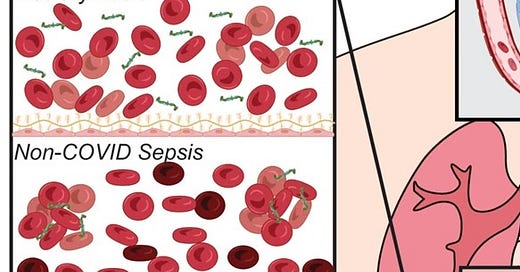




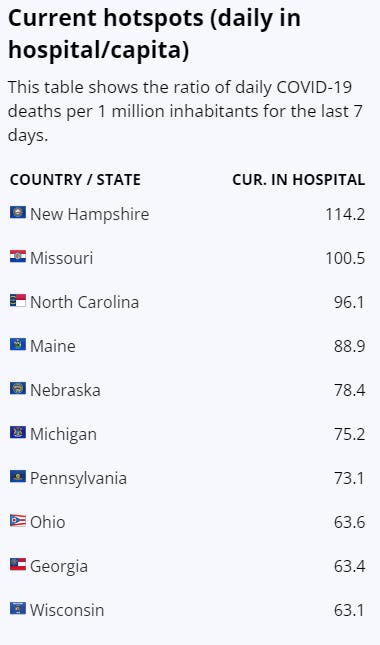

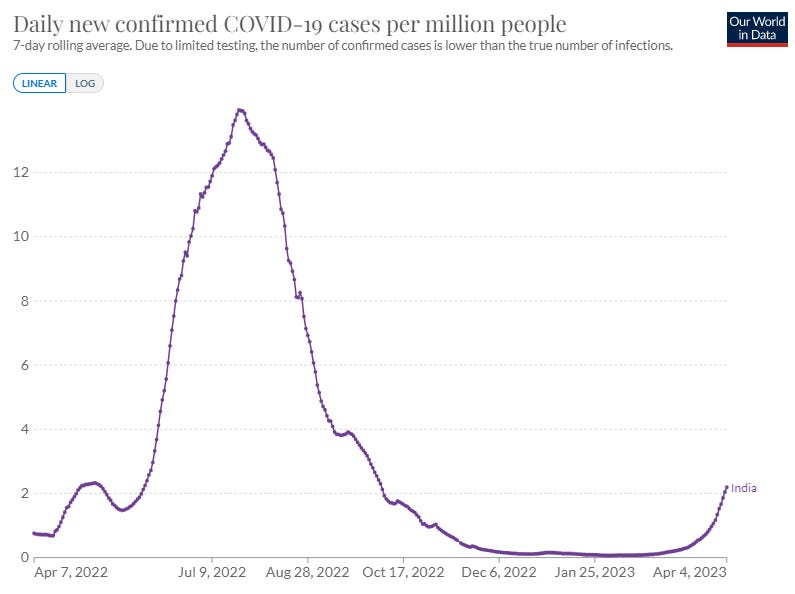

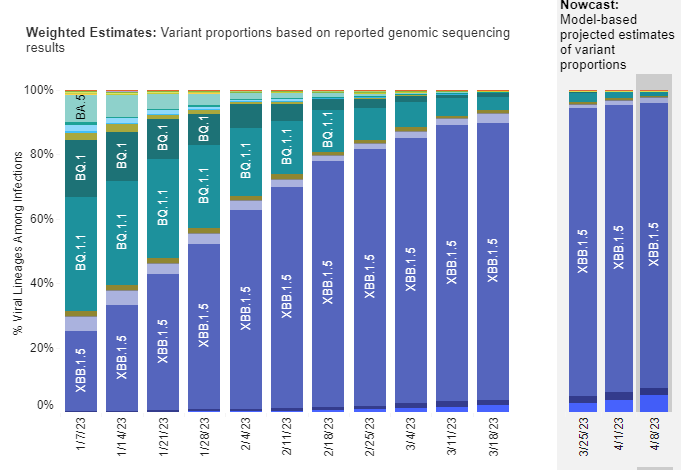





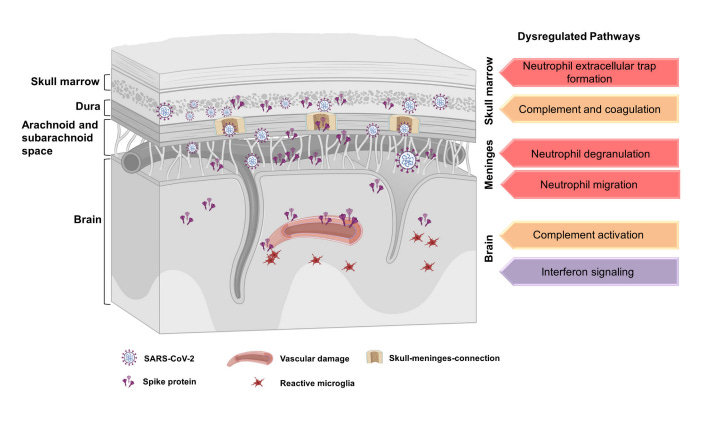




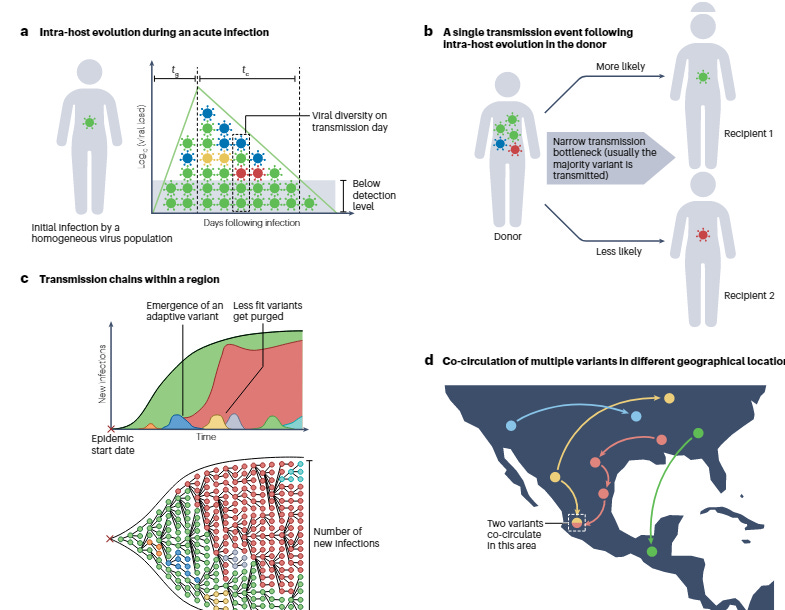


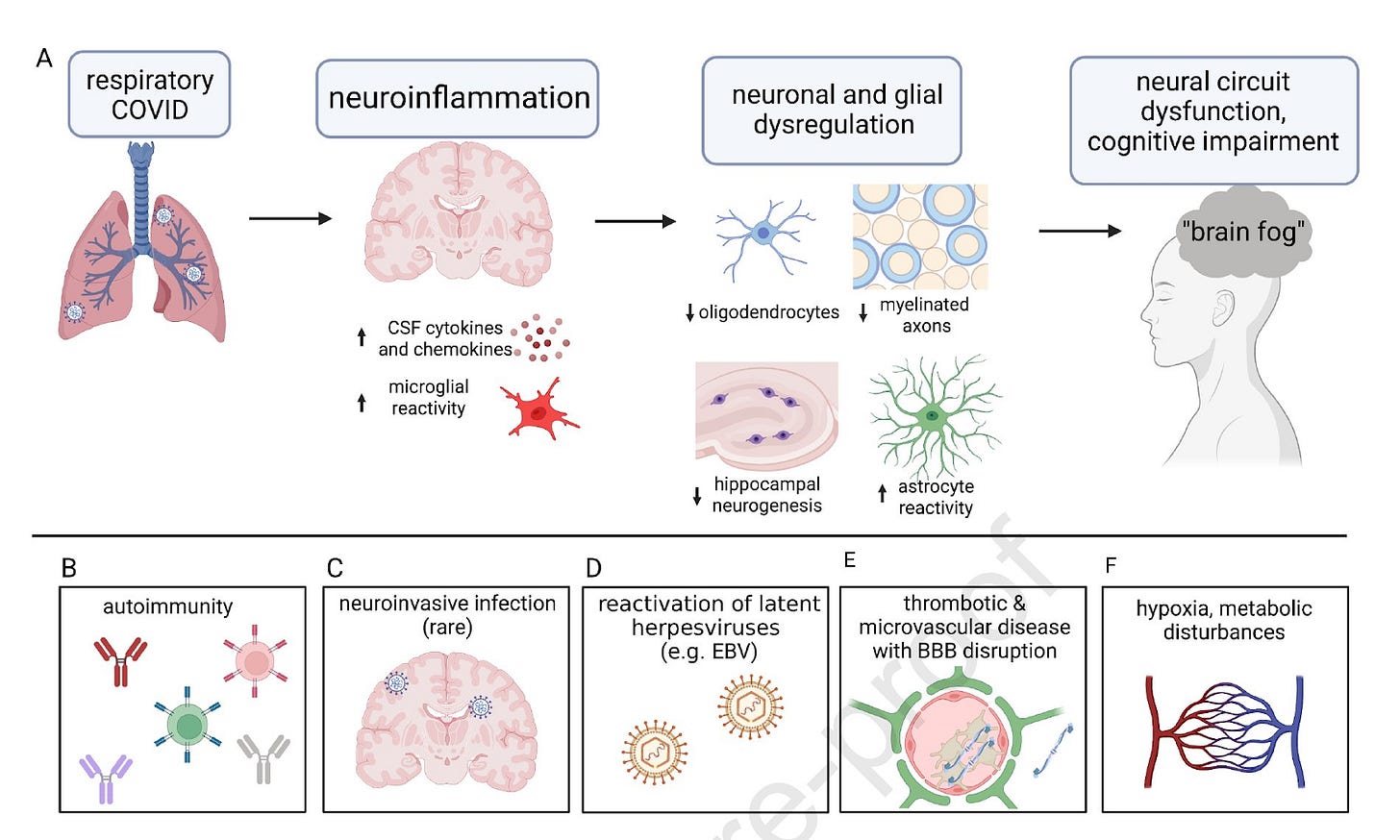

Good explainer of the German study and other neuro studies.